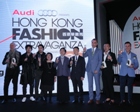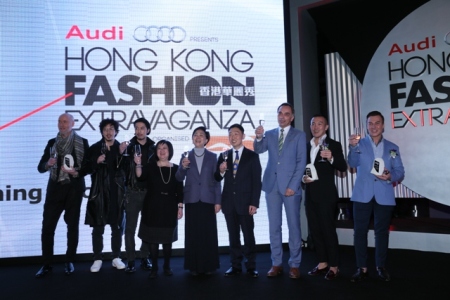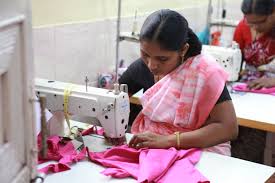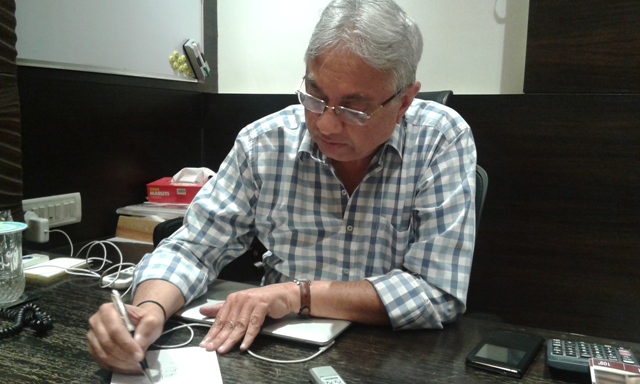FW
Claiming profitability improvement due to restructuring steps taken over the past years and anticipating 2014 turnover at $50 million, German fibre manufacturer Trevira has said that the business in the polyester specialties segment continued in a solid and pleasing fashion for the just completed year.
The flame retardant fibres business at Trevira succeeded in generating volume growth of 4-5 percent over the previous year despite difficult economic background and a continuing slow-down in investment. Growth was achieved both in the traditional textile sector and in technical applications like non-wovens, with the latter showing significant volume rise in the spun-dyed segment. Alongside all this, there are a variety of qualification processes running with North American customers and given a positive conclusion, promises a solid basis for growth in 2015, it added.
Business in flame retardant filaments also made stable progress in 2014, showing a slight rise on the previous year. Trevira also noticed a positive development in textile materials incorporating Trevira low-melt yarns, which are being used in the sun protection and acoustics sectors. It also sees good future prospects for business in Asia, as higher fire safety standards gain more ground there.
According to the fibre producer, Trevira CS is also being used in China, in hotels, the office sector, as well as in public buildings such as theatres. Trevira also introduced a new line of Trevira CS filaments made from 100 per cent recycled bottle chips, which are expected to cover new fields of application. Based on new polymer modifications, these product developments are set to open sales opportunities not only in the contract sector, but also in technical applications and in the private market.
Recognizing the demand and need to have a show to share innovative solutions for the fashion industry, the Fédération is organizing ‘Traffic’, the first B2B trade show at the Carreau du Temple, Paris on November 4 and 5, 2015. With this trade show, the Fédération aims to promote its French and international network of the fashion industry organisations, experts, and service providers.
Led by Daniel Wertel, the Fédération represents the women’s ready-to-wear industry by helping more than 600 companies each year. It assists them in structuring their businesses, expand into export markets, develop their points of sale, and optimize their business strategies. With their day-to-day involvement, the Fédération has been witnessing the industry’s growing demand for assistance in various services and business challenges.
The objectives of the Traffic trade is to facilitate connections between fashion businesses and the professionals, present all existing services, programs, and solutions that target fashion businesses, showcase French and international innovations that serve the fashion industry. Priscilla Jokhoo, the Fédération’s Business Division Director, is in-charge of organising this trade show.
www.salontraffic.com
The recent Kingpins show held in New York from January 20 to 21 highlighted international denim and sportswear fabric mills, wash houses, full package manufacturers, trim suppliers and service and information providers relevant to the industry. The show had 66 exhibitors, sharing the latest in manufacturing and fabric innovation.
Jeanologia displayed the various effects that can be achieved with its state-of-the-art light scraper laser technology. These lasers, which re-create designs and images made in photoshop, can produce everything from standard whiskers to exact duplications of HD photographic images. The company is also hawking a new washing method that saves amounts of water and energy.
Orta Andalou from Turkey showed an extensive range of fabrics. These include categories such as Ultra Flex, a stretch denim with 30 per cent recovery, Body Science, a group with a soft hand thanks to modal, and D Craft, a series of vintage-inspired stretch denims.
Mexico’s Global Denim was also on hand to show its Spring/Summer 2016 collection called Ramp Up. Its highlights include super soft feminine stretch, masculine rigids, masculine stretch and a black, white and gray group.
The next Kingpins will be in Hong Kong, March 24 to 25, 2015.
www.kingpinsshow.com/main/default/s-aboutus.aspx
 The HKTDC Hong Kong Fashion Week for Fall/Winter and the concurrent HKTDC World Boutique, Hong Kong, saw some 1,800 exhibitors from around the world. The four-day extravaganza from January 19 to 22 at the Hong Kong Convention and Exhibition Centre (HKCEC) was based on the theme of “Light Me Up”.
The HKTDC Hong Kong Fashion Week for Fall/Winter and the concurrent HKTDC World Boutique, Hong Kong, saw some 1,800 exhibitors from around the world. The four-day extravaganza from January 19 to 22 at the Hong Kong Convention and Exhibition Centre (HKCEC) was based on the theme of “Light Me Up”.
The fair showcased latest collections from a number of internationally celebrated fashion designers: Hong Kong’s designer duo Eri Chu and Philip Chu; New York designer Loris Diran; an award-winning Chinese fashion designer Wang Yutao from Beijing and Swedish couture fashion designer Lars Wallin. The Hong Kong Fashion Extravaganza for the first time welcomed Audi as its title sponsor. Audi honoured designers who exemplify a dedication to design and craftsmanship via the international platform of the Hong Kong Fashion Extravaganza.
Loris Diran, a New York-based designer with a signature label, attended for the first time. 
Diran describes his collection for men and women as ‘elegant and edgy’. He works with the same theme for men and women. Currently, he retails through Saks Avenue and other select boutiques in the US and Europe. “The objective to participate in The Hong Kong Fashion Extravaganza, is primarily to introduce myself and start a relationship,” says Lorid. He finds it very interesting how Asian brands and companies develop lovely ‘items’ those cannot be generally described as basic but are speciality range even in lower prices. Beauty of the market he observed as trends is digital prints especially in street style, expressing the exotic culture. With big luxury brands like Gucci, Prada and Valentino Jack here and consumers buying unique products and is willing to see newness. The big trend is young men are experimenting and sales have grown from 25 per cent earlier to 38-40 per cent now. “This fashion week is wonderfully organised and not even a single detail is missing”, he sums up.
Shirley Chan, Chairman, Hong Kong Brand Development Council, while addressing a media briefing of overseas journalists said, “HK is not only a production centre but also a growing sourcing centre for clothing. Between January to November 2014, HK exported $18.7 bn worth of clothing and accessories. The US being largest at 37 per cent, EU second at 28 per cent and Japan was the third biggest export destination. She laid importance that clothing business because of fast fashion and others is becoming far more dynamic now, earlier a lead time of 9-12 months used to be there for supplying to brands and retailers, which has reduced to 4-6 months now adding lot of pressure. She said in this edition of HK Fashion Week, the new zones of thermal clothing and functional textiles that have been added are being well received by buyers.
On the second day, the Hong Kong Young Fashion Designers’ Contest 2015 (YDC) was held. The remarkable judge panel included H&M Creative Advisor Margareta van den Bosch of Sweden as the VIP Judge. TV star Chris Lai joined top models Jia Jing, Mikki Yao, Ana R., Alice B and Li Dan Ni as in the show presenting designers’ latest collections. More than 1,000 guests attended the show, among them were celebrities Daniel Chan, Edmond Leung, Ivana Wong, William Tang, Henry Lau, Hilary Tsui and Zing.
The 15th Footwear Design Competition Hong Kong, Knitwear Symphony 2015 & Hong Kong Young Knitwear Designers’ Contest, as well as The Ecochic Design Award 2014/15 Grand Final Fashion Show were held during the fairs. The events also included popular trend forecast seminars by WGSN, Fashion Snoops and other leading fashion consulting agencies.
The event had increased focus on knowledge forums through a wide range of seminars on sustainability, emerging markets of Myanmar, and other key industry topics, as well as masters’ sharing by Margareta van den Bosch, the Creative Advisor of H &M, and a wide range of seminars. In the opening speech of sustainability seminar “Sustainable development of fashion industry: The way forward” Hon. Felix Chung, member of legislative council of HKSAR (textile and garment sector) emphasised on the need for sustainability. He said sustainability is a channel to upgrade global competition and it is critical for HK to remain a sourcing hub for textile and clothing sector and develop HK as Asian knowledge hub of sustainability. HK can play a key role in developing Higgs Index as global sustainability index.
Margareta van den Bosch, the Creative Advisor of H &M, widely known as “mother of the Swedish fashion industry” made a presentation on creative principals of H&M and also showcased videos of various key collaborations with global celebrities that she managed for H&M including with David Beckham, for David Beckham Bodywear at H&M and M by Madonna. She advised today’s designers on how to learn skills and work as intern in the initial years of jobs, even if they want to start their labels, “this will help you to lose less money”, she said humorously. Bosch describes her way of interpreting trends as “As a designer you must keep your eyes, ears, everything open for...celebrity culture, the art, movies and music world”. She also mentioned that I don’t like “fast fashion” as much because it is always going to take as much time to plan, manufacture and to be there.
Another interesting panel discussion “E-Commerce: an exciting opportunity for sustainable fashion?” was organised by Redress, moderated by Christina Dean, Founder and CEO, Redress with panellist from Net-a-Porter, TPassion, UPS and Goodone e-commerce companies. Dean opened the discussion by emphasizing on the need to be sustainable, ecommerce which is currently 5.9 per cent of the total retail market and shall be 8.8 per cent by 2018, should address to the grave concern over the textile and clothing waste being generated millions of tonnes every day, “ Hong Kong alone generates clothing waste of 293 tonnes everyday”, she exclaimed. Panel discussed about the steps being those are being taken even at the level of logistics to reduce miles travelled by delivery staff.
Dedicated zones for clothing categories The Hong Kong Fashion Week had many dedicated zones covering the entire range of buyers’ needs from yarns, fabrics, fashions and accessories to garment-related products and services. There was a new zone this year for thermal clothing featuring apparel ideal for extremely cold weather. The Taiwan Sweater Industry Association showcased thermal yarn, a long-wearing yarn that absorbs and distributes heat evenly. Emporium de Mode was a unique premium section dedicated to presenting stylish and distinctive garments in an elegant setting, while Fashion Gallery displayed high-end fashion collections with an emphasis on quality. Other highlights included Fabrics & Yarn, together with Taiwan Textile Federation, which featured a wide selection of fabrics, fibres, laces and yarns, including eco fabrics and yarn; and World of Fashion Accessories, with the latest in accessories to complement fashion selections.
HKTDC World Boutique A leading showcase for international fashion brands and designer collections in Asia, the event provides a platform dedicated to fashion and lifestyle brands. More than 660 brands from 20 countries and regions took part in this year’s World Boutique, Hong Kong, including first-time participants from Finland, Nepal, New Zealand, South Africa, The Netherlands and the USA. Fashion brands and designers included 2%, Aquascutum, Episode, i.t, Ika Butoni, Jessica, Lu Lu Cheung, Marccain, Moiselle, Shanghai Tang and Zalora.
Many local and overseas industry associations staged runway shows or formed group pavilions at the fair, including the Hong Kong Fashion Designers Association, Indonesian Fashion Designers Association, Japan Fashion Leather Designers, Kokusai Fashion Centre, Japan and Taiwan Textile Federation. New pavilions this year included the Fashionally Pavilion, Finland-Hong Kong Trade Association and Thailand Textile Institute. Japan Fashion Leather Designers presented 12 premium brands and Finland-Hong Kong Trade Association showcased collections with 11 designers during the inaugural session.
Bangladesh has a plan to promote jute-based handloom industries in rural areas.
The idea is that these will be run mainly by women and contribute to their empowerment, one result of which would be enhanced exports to international markets. Also promoting jute-based handloom industries is seen as vital for enhancing exports of quality jute products and earning more foreign exchange.
Women would be trained in setting up jute-based cottage and handloom ventures. These entrepreneurs would be provided a package of services like marketing facilities and the necessary capital, support and the latest technologies for producing high valued, quality and diversified jute products.
Jute growing is particularly suited to the poor. Women figure particularly prominently across all levels of the jute industry – as farm laborers and mill workers, and as small businesswomen and employees making and selling jute products.
Known as the golden fiber jute has been traditionally cultivated in the Bengal delta for many years. Around 33 per cent of all jute comes from Bangladesh, making it the world’s second largest jute producer.
Bangladesh is the largest producer of raw jute or jute fiber in the world. Production of jute is highly labor-intensive, creating seasonal employment for 48,000 women on the land.
Jean-Maurice Ferauge has been appointed director of Lectra Japan. He will be responsible for developing Lectra’s presence in Japan, particularly in the automotive and fashion industries. He will also consolidate Lectra’s value proposition in the field of services.
Férauge has extensive experience in successfully managing far reaching projects throughout the whole world, particularly in Japan. He is a mechanical engineer. He worked for nine years in the aerospace industry. He will be responsible for strengthening Lectra’s Japanese teams by continuing the recruitment of new talents.
Lectra has been in Japan for 30 years. Lectra already supports a lot of customers in Japan, including the major automotive suppliers, as well as the largest fashion industry brands, with its expertise and highly advanced technology such as its product lifecycle management solution.
Over the past few years, Lectra has placed the development of professional services at the heart of its priorities. Lectra is the world leader in integrated technology solutions dedicated to industries using soft materials--fabrics, leather, technical textiles and composite materials.
Lectra develops the most advanced specialized software and cutting systems and provides associated services to a broad array of markets including apparel, accessories, footwear, car seats and interiors, airbags, furniture as well as a wide variety of other market sectors.
www.lectra.com/
Accord will inspect 200 more garment factories in Bangladesh that were added to its list after completion of its initial assessment in September. It rolled out its initial safety inspection in February 2014 and completed assessment of some 1,103 factories in September 2014.
Accord is the European Union-based group with over 190 members including H&M and Inditex. The platform was formed to ensure workplace safety in Bangladesh’s apparel industry for a period of five years following the Tazreen and the Rana Plaza tragedies that killed more than 1,200 workers. On December 17, Accord sought a proposal from interested firms for carrying out fire, electrical and structural integrity assessment of 200 garment factories.
Accord has some 38 full-time permanent local engineers. After each factory is inspected for fire, electrical and structural safety, factory owners and signatory companies will develop a Corrective Action Plan, which will be published online after approval by Accord.
After its initial assessment, Accord found more than 80,000 safety hazards in its assessed garment factories. Accord inspections have also identified more substantial safety requirements, such as installing fire doors and automated fire alarm systems, establishing fire protected exits from factory buildings, and strengthening columns in the buildings.
Apparel Training and Design Centre (ATDC), one of the largest vocational training provider for the apparel industry was awarded as the ‘Best Institute: Innovation’ by ASSOCHAM at ‘Summit-cum-Awards on Skilling India’ held on January 20 in New Delhi. ATDC has received this award for their exemplary contributions in introducing new innovative skill development training courses for youth and having different verticals to work with Ministry of Textile that include: long term courses with DGET, Ministry of Labour and Employment, and vocational courses with AICTE thus offering a bouquet of courses for career and skill development in a cohesive manner with a focus of skilling for aspirational Indian youth.
Recognizing the importance of skill development and entrepreneurship in the country, the new government has laid highest priority on skill development and entrepreneurship. The event was organised by ASSOCHAM in partnership with various ministries to discuss current scenario on skill development and catalyse the initiative by recognizing the outstanding work of different agencies in skill development.
The focus of the summit was forecast of skills linked to new business order, models of collaboration & partnerships towards successful skilling, strategy for effective execution for real success & sustainability, from employability to employment: challenges & way forward in skilling to placement), enabling financial support for start-up businesses/ entrepreneurship and skilling to placement – a case study.
 While rising production costs in China and its shift towards value-added goods has not really undermined its position in the world textile and apparel sourcing market, however, western countries are increasingly looking for low-cost sourcing destinations and shifting focus on near sourcing manufacturing.
While rising production costs in China and its shift towards value-added goods has not really undermined its position in the world textile and apparel sourcing market, however, western countries are increasingly looking for low-cost sourcing destinations and shifting focus on near sourcing manufacturing.
As Rahul Mehta, President, IAF points out, “The concept of manufacturing closer to home is catching on. It will impact global dynamics. Manufacturing countries will look at non-traditional markets since they can’t afford to depend on markets that are not growing much. Europe and South America will expand faster. Production will be higher in South America since US companies are looking to source from them.”
Sourcing closer home, a new trend
The emerging trend among developed economies is moving facilities closer to suppliers. One of the ways, companies are following is ‘near-sourcing’, a supply chain strategy that minimizes the distance goods travel between suppliers and distributors. Near-sourcing reduces the total cost of doing business, which has risen exponentially in the last few years, making profitability more difficult to maintain. While European companies are moving facilities to the United States, the American players are looking south of the border. South America has become an attractive location for these companies looking to reduce the cost of ocean crossings from facilities in Asia.
The textiles industry in Mexico, for instance, is recovering from a decade of losing ground to
 lower-cost Asian rivals. More recent developments are playing in the country’s favour, causing both domestic demand to rise and US companies to shift their orders back to Mexico. As Asian wages climb, sourcing from Mexico is becoming increasingly attractive due to its comparably high-skilled labour force, its improving infrastructure, its membership in the North American Free Trade Association and, most importantly, its proximity to the United States, which allows for short lead times. Indeed, Mexico is becoming known as an affordable place to produce and one whose facilities provide a high level of customer satisfaction.
lower-cost Asian rivals. More recent developments are playing in the country’s favour, causing both domestic demand to rise and US companies to shift their orders back to Mexico. As Asian wages climb, sourcing from Mexico is becoming increasingly attractive due to its comparably high-skilled labour force, its improving infrastructure, its membership in the North American Free Trade Association and, most importantly, its proximity to the United States, which allows for short lead times. Indeed, Mexico is becoming known as an affordable place to produce and one whose facilities provide a high level of customer satisfaction.
Honduras, meanwhile, has become America’s single largest source of T-shirts, helped by the US-Central America Free Trade Agreement (CAFTA), which went into effect in 2006. When ranked among the top apparel exporters to the United States, it sits at number seven.
Other emerging low cost sourcing options
According to a Kurt Salmon Global Sourcing Reference report although Bangladesh continues to be among the top five exporters to the United States, it won’t be for long unless it amends its production to become more socially and environmentally responsible. Vietnam and Indonesia, which occupy the number two and three spots on the US exporters’ list, face a similar challenge as well.
However, Mehta feels buyers are putting pressure on Bangladesh factories to improve wages, labour standards and safety standards but the question is when Bangladesh standards improve, will they be as competitive as they are now? “In the meantime many buyers are looking at other sourcing options,” he says.
Cambodia, the reports says is showing strong double-digit growth in six out of 10 product categories, but its market share remains relatively small. And CSR is not the only challenge for low-cost sourcing centers or those countries aspiring to be; many still lack the required infrastructure as well as the supply chain and production capabilities needed to offer volumes similar to those of China. For example, India, in order to hold onto its place as the sixth-biggest exporter of apparel to the United States, has to solve its infrastructure, productivity and business environment issues and better leverage its materials, which are more consistently available than those of many other low-cost sourcing countries.
“So far India has failed to grow beyond its traditional strength in apparel exports. We are not looking seriously at product expansion, category expansion, and market expansion. We are too much dependent on our traditional strengths. To grow exports, India needs to look at new markets and have a broader product basket. We should move away from cotton based and summer based exports. Capacity should be used around the year that will reduce cost of operations, increase profitability and turnover,” opines Mehta.
Experts say that tomorrow’s sourcing road will be a bumpy one, with raw material prices difficult to predict and constantly shifting consumer expectations. Sums up Mehta saying, “South Asia’s importance in apparel will grow. I think there is potential for intra trade. Both as a market and as a support system, South Asia will grow. South Asia and the Far East can be seen not only as markets but as sources of supply. Apparel has shifted from high cost economies to low cost economies. It has moved from the US and EU to China to Bangladesh, Vietnam and Cambodia. Myanmar and Africa are the only countries left now.”
Brazilian cotton output might again reduce in 2014-15, but would still be close to the average registered over the last 11 seasons. Worldwide, a decrease in supply is expected for the third time in a row, but despite that, ending stocks might continue to increase. In Brazil, prices will depend on export parity with international prices, export costs and exchange rate ratio and on the volume effectively shipped, which will determine domestic surplus.
Producers who are able to access the global market might obtain remunerative prices, especially if the exchange rate is higher than that observed in December. Since mid-2014, regional quotes are below the official price floor, and data indicates a tight situation, when revenue and costs of the new season are compared.
When comparing the same parameters like cost of inputs in November 2014 to export value in September 2014, profitability was six per cent positive. In spite of possible smaller area and production, considering prices, exports will be a major market definer in 2015, which can change the benefit/cost ratio.












